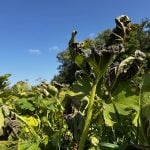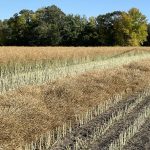Agriculture Canada is spending $4 million over the next four years to battle clubroot.
The devastating canola disease has spread to many areas of Alberta and made its inaugural appearance in Saskatchewan this summer.
Yield losses can exceed 50 percent in individual fields and the disease is seen as a serious threat to canola production.
The department is now launching a scientific attack against the disease, inviting applications from research scientists across Western Canada.
The goal is to discover resistance and novel disease management strategies to combat the fungal pathogen that causes clubroot.
Read Also

Trade war may create Canadian economic opportunities
Canada’s current tariff woes could open chances for long-term economic growth and a stronger Canadian economy, consultant says — It’s happened before.
The department’s request for proposals, issued in mid-July, emphasizes the situation’s urgency.
“Cultivars that incorporate new sources of genetic resistance are required to limit the disease, which could spread rapidly within the next two to three years, causing immense economic damage to canola producers,” the document said.
Applications had to be submitted by Aug. 15. They have now been sent for international peer review, which should be returned by Sept. 9, and will then be subjected to one final internal review. The department plans to select one project.
“The successful candidate should be in a position to start activity by mid-September,” said George Clayton, program director for science partnerships at Agriculture Canada’s research centre in Lethbridge.
Exactly what the selected project will involve won’t be known until the reviews have been completed.
Clayton said the rapid spread of clubroot in Alberta and the appearance of the disease in west-central Saskatchewan this year is a big concern.
“This research is very timely. We decided that before it gets too, too serious, we needed to invest some money to try to nip it in the bud.”
Agriculture Canada is also planning to expand a clubroot research project already underway at the Saskatoon research centre.
Meanwhile, an Alberta company that specializes in environmental decontamination has teamed up with the Alberta government to look at ways to reduce or eliminate clubroot spores from tools, equipment, machinery and vehicles.
Alberta Agriculture has selected Swift Environmental Equipment Ltd.’s proprietary clubroot management system to conduct a pilot-scale evaluation of new decontamination technologies developed in the province.
The two-year project, to be conducted at the provincial governments crop diversification centre in Brooks, Alta., will determine whether new sanitation methods developed in small-scale trials have commercial potential.
Soil and wash water samples will be taken from equipment cleaned at Swift’s facilities in Lloydminster and Medicine Hat, Alta., and sent to Brooks for evaluation.
Agricultural experts say proper sanitation is a key to clubroot control.
The three keys are:
– Remove soil and plant debris from equipment by scraping or knocking off clumps.
– Clean residual soil and debris from surfaces by pressure washing, steaming or compressed air.
– Apply a disinfectant mist to the clean surfaces (one to two percent active ingredient bleach solution).
Crop rotation is seen as the best strategy to control clubroot.
Also, interim registration was granted to clubroot resistant canola hybrid 45H29 from Pioneer Hi-bred in early 2009.














